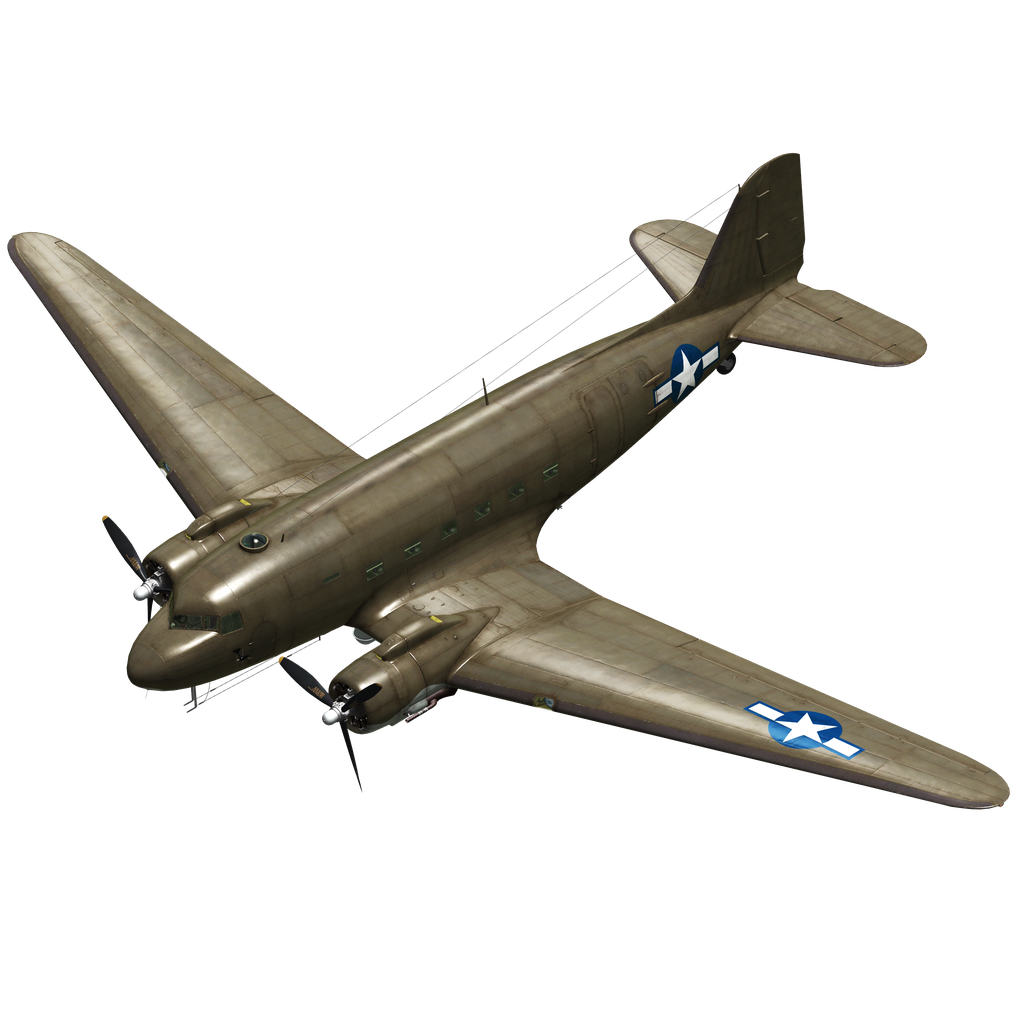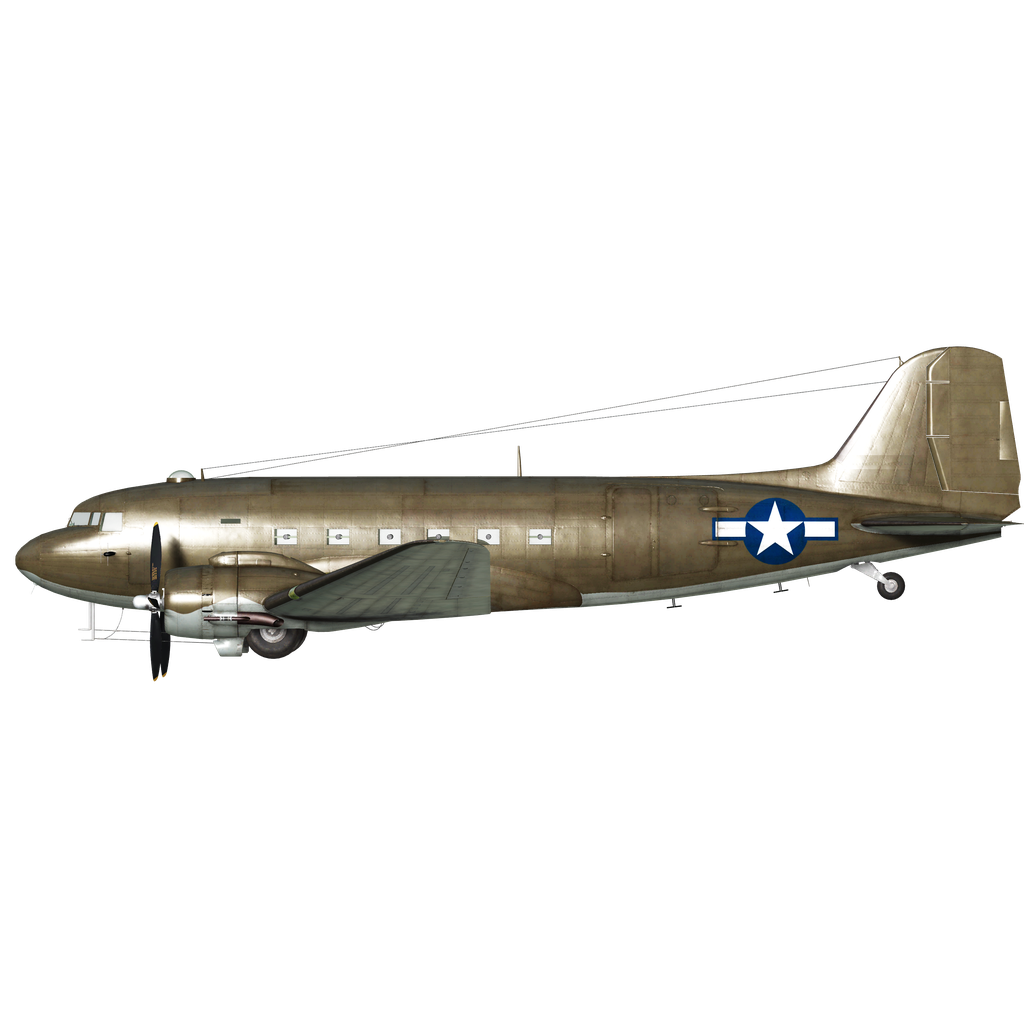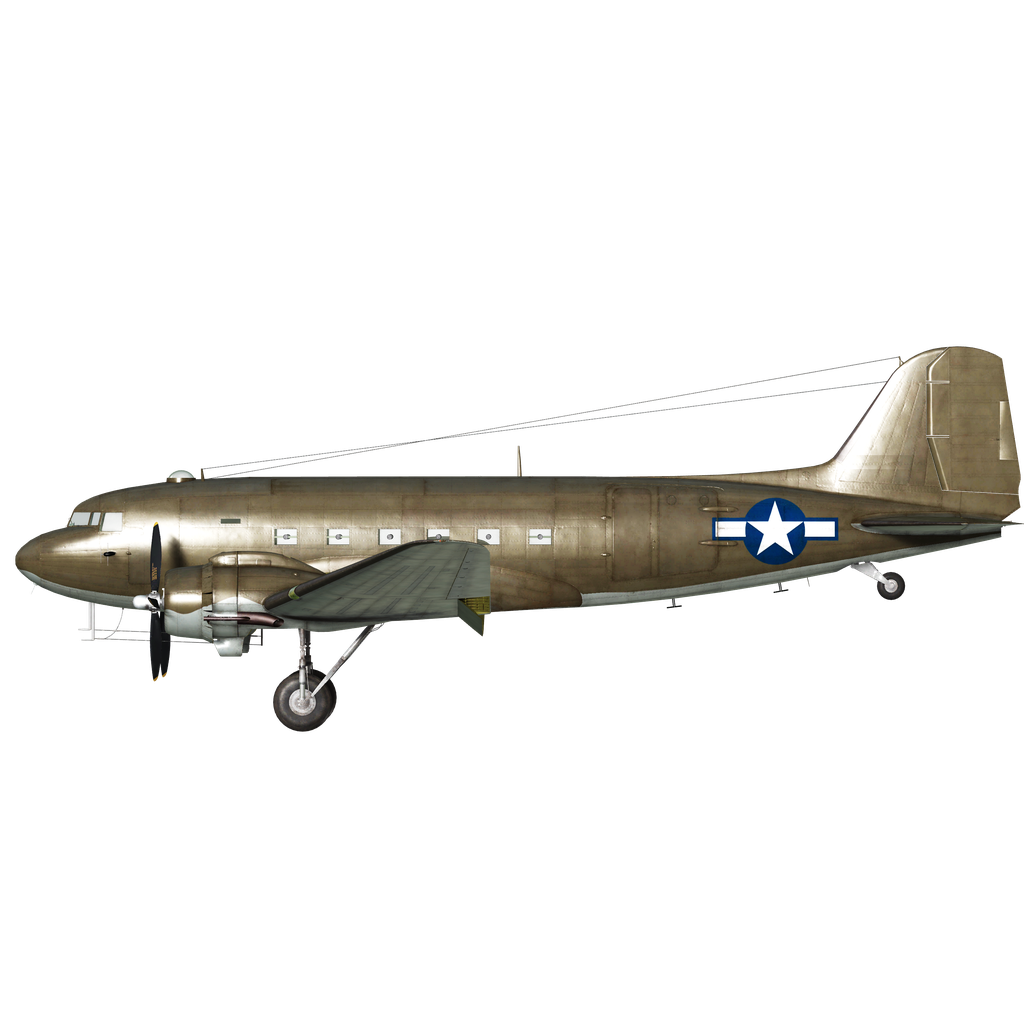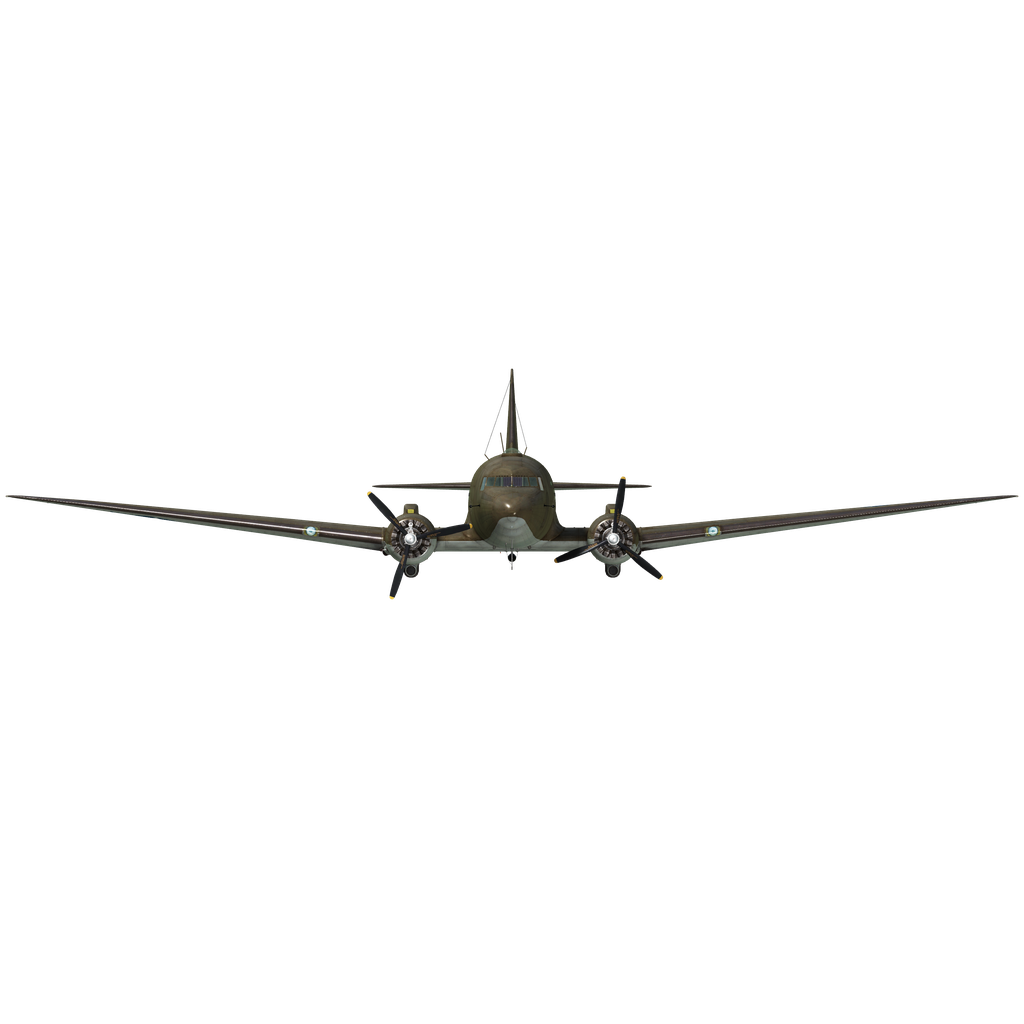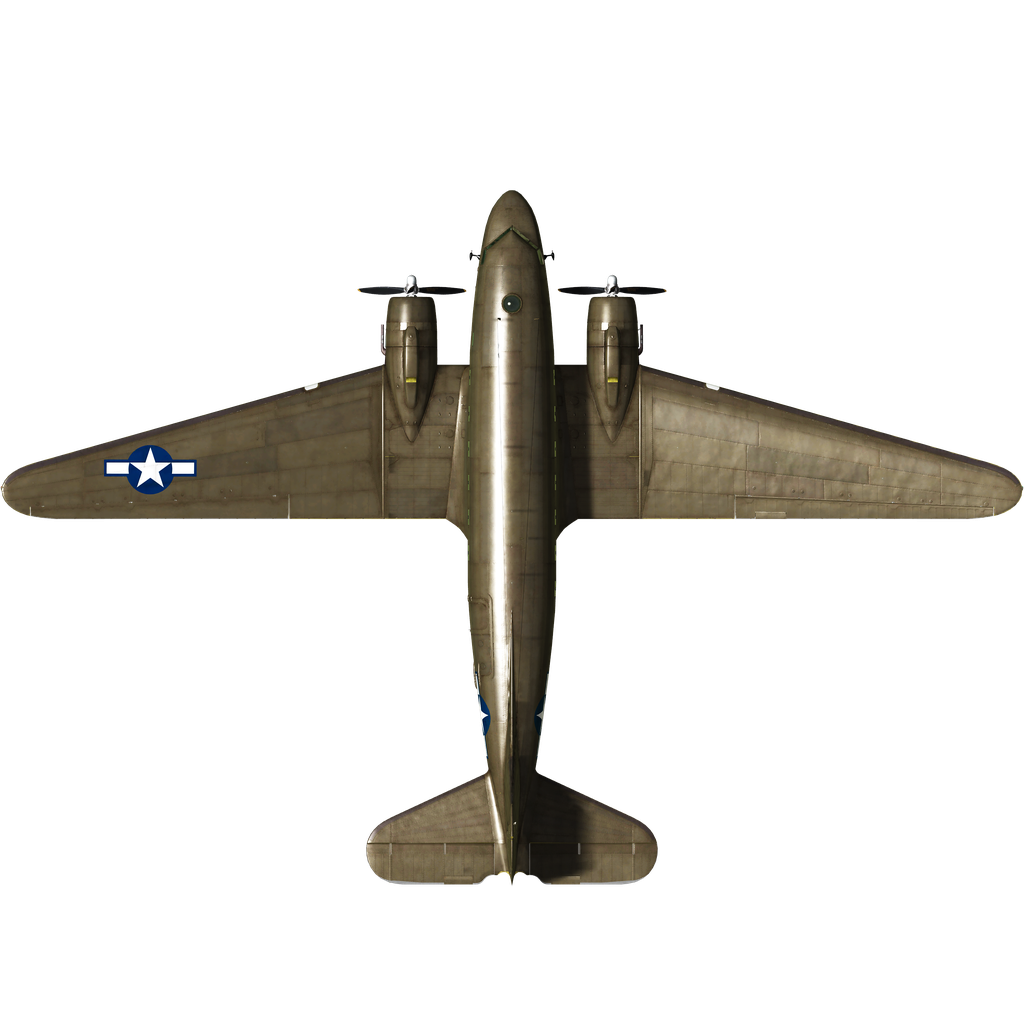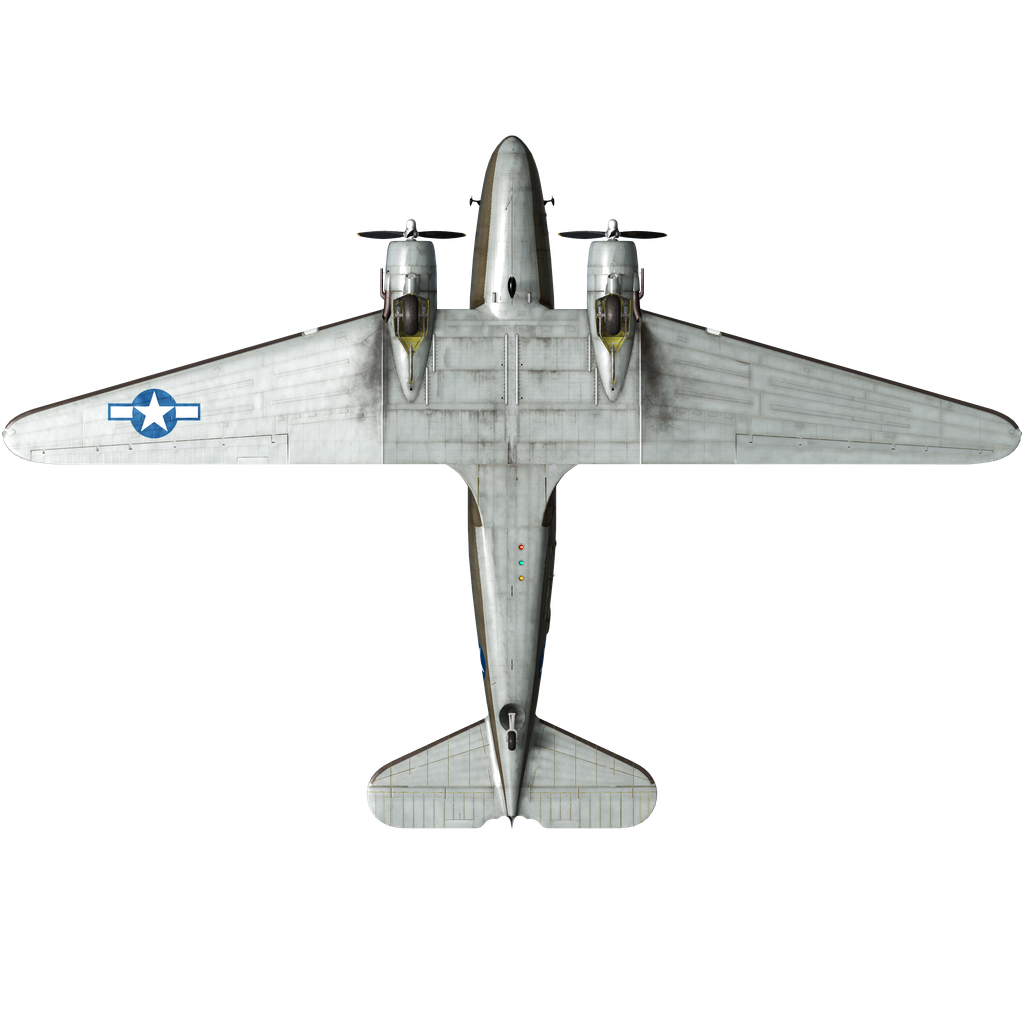In 1935, Douglas Aircraft created the most advanced passenger and transport aircraft of its time — the DC-3. The plane became popular and was sold and produced under license throughout the world, including the USSR in a significantly modified form under the name Li-2.
The first military version, the C-47A (based on the DC-3A), entered service in August 1939, while the C-47s specially adapted for military transport, called Skytrain, went into production in November 1941.
The C-47 was an all-metal low-wing aircraft with no external struts, a single wing, and retractable main landing gear struts. The wing was equipped with hydraulically operated landing flaps and light alloy ailerons with canvas surfaces. The leading edges of the wings and the tail were equipped with pneumatic rubber deicers. The power plant consisted of two R-1830-92 "Twin Wasp" engines with 1050 HP each at an altitude of 2285 meters. The crew consisted of 3 persons: two pilots and a radio operator.
In the cargo version, the C-47 could carry a payload of 2,722 kg. Other variants provided for the transport of 28 fully armed paratroopers (on folding bucket seats along the cockpit sides) or 18 wounded on stretchers and a three-person medical staff. Under the fuselage could be installed attachments and a mechanism for dropping parachute containers.
-
C-47 (R4D-1, designated "Dakota" I in the United Kingdom), a 28-seat transport with R-1830-92 engines, cargo doors, reinforced floor, extended wing, and astrodome, based on the DC-3A-360;
-
C-47A (R4D-5, "Dakota" III), with reinforced landing gear and improved electrical equipment;
-
C-47B (R4D-6, "Dakota" IV), with R-1830-90/90B/9C engines with two-stage superchargers for better altitude;
-
C-47D, a conversion of the C-47B engines to one supercharger speed;
The C-47 was used extensively by the Allies during the war and was used in all theaters. In the fall of 1942, Dakotas landed Anglo-American paratroopers in North Africa. In July 1943, the Dakotas landed Allied paratroopers in Sicily, in June 1944 in Normandy, and in August in southern France. The Dakotas also participated in the Arnhem operation and the crossing of the Rhine. C-47s were used for transportation in the Far Eastern theater. Thus, from 1943 to 1945, C-47s were used to transport cargo in the Far Eastern theater of operations. C-47s were used to transport supplies across the Himalayas to China and provided offensive support in the jungles of Burma where there was simply no other method of supply. The last major airborne landing was made by the British near Rangoon, Myanmar.
Approximately 600 aircraft were used by the U.S. Navy under the designation R4D.
Soviet C-47s delivered urgent cargoes during the Battle of Kursk, participated in the landing on the Bukrinsky bridgehead behind the Dnieper in 1944, provided "air bridges" to Slovakia and Yugoslavia, and supported actions on all fronts and fleets in the final stages of the war. Northern Fleet aviation used the C-47 to search for German U-boats in the Arctic. It did not carry bombs, but thanks to a large fuel reserve it could patrol for long periods in remote areas where other types of aircraft could not reach.
The transports also performed well during the short campaign in the Far East: the pace of the Soviet offensive was so fast that the forward tank units could only be supplied with fuel by air (the C-47 usually carried 12 barrels, and ammunition was also delivered by air). Groups of two to ten planes landed amphibious assaults in Harbin, Mukden, Girin, Port Arthur, and other places.
In the post-war period, the C-47 was used by many countries around the world as a bomber and transport aircraft in colonial and local wars. During the Vietnam War, the Americans upgraded several to AC-47 heavy attack aircraft, which strafed guerrilla areas. The last time C-47 bombers were used was in the "soccer" war between El Salvador and Honduras in July 1969 — Salvadoran crews used them to attack military installations in border areas.
Sources:
1. Kotelnikov V. "Douglas C-47 transport airplane" Aviakollektsiya №10. 2008
2. Website https://daveswarbirds.com
3. Filimonov M. "All the same "Dakota"" Wings of the Homeland No. 12. 1993
4. Rene J. Francillon "McDonnell Douglas Aircraft Since 1920, Vol 1". 1988
5. Website https://aviarmor.net
